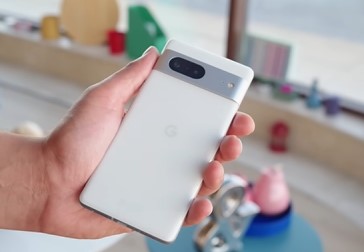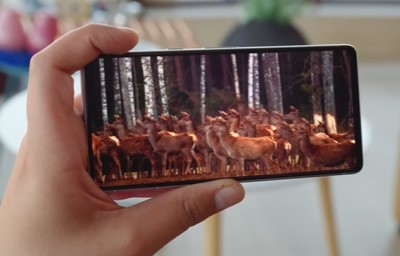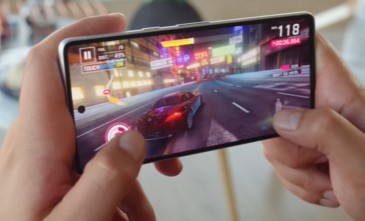The Google Pixels are phones that get a lot of hype, generally for their cameras and software experience, the Pixel 7 doesn’t reinvent the wheel, but you do get a slightly smaller build, a brighter screen, a new selfie shooter, and an improved Google Tensor G2 chipset.
Note: This article contains Amazon affiliate links. If you make a purchase through these links, I may earn a commission at no extra cost to you.
Design and Build

Starting off with the design on The google Pixel 7 we have a slightly smaller display and body than last year. It’s a little hefty, though not what you might expect from a compact device. The back is made of Gorilla Glass Victus, and the wide strip for the cameras is made of aluminum, not glass. It’s all one piece with the frame, Like the previous model and the Pro version, the Google Pixel 7 is IP68 rated against dust and water up to a depth of 1.5 meters.
Display and Speakers Sound

Like I mentioned, the Pixel 7 display is smaller, going down from 6.4 inches to 6.3. But it’s an OLED with a 1080p resolution and a 90 Hertz refresh rate. The fast refresh rate smooths out your movements on the screen, though it’s maybe not quite as smooth as a 120Hz panel.
It will dial down to 60 when you stop interacting with it to save energy. And like on the previous model, the display is overall quite nice. It’s sharp enough and has HDR 10 Plus support, deep blacks, and great color accuracy. What has been upgraded this time around is the maximum brightness.
We were able to achieve 460 nits with the manual brightness slider, and it can boost to over 970 nits in auto mode when in bright conditions. The fingerprint reader sits under the display. It’s well-placed but we’ve seen faster readers elsewhere.
For audio, it has a stereo speaker setup with the earpiece doubling as the top speaker, their loudness is good, and the sound quality is good too, with clear vocals and decent bass.
Performance and Software

You can get it with 128GB or 256 gigs of storage, but it’s not expandable beyond that via microSD. The Pixel 7 packs the same chipset as the Pro version, the second-gen Google Tensor G2 built on a 5-nanometer process, and It brings new mid-tier CPU cores and higher CPU clock speeds, plus a new GPU.
There’s also an improved Tensor Processing Unit (TPU) capable of some serious number crunching when it comes to AI-related tasks. In benchmarks, it is no slouch, but it falls behind the current competition, especially the flagships that are running on the top Qualcomm silicon.
In real-world use though it feels quite smooth, and we didn’t run into any issues. When it comes to sustained performance, it isn’t the best around, but in our test, it showed a nice improvement over the previous model.
One of the big selling points of the Pixel 7 is the software, You get Android 13 with a clean and bloat-free stock Android experience. Plus, there’s solid support from Google for at least three years of major updates.
Beyond stock Android, the new Pixels put the Tensor G2’s new processing to good use with some region-specific AI-based features.
Battery Life
The Pixel 7 actually has a smaller battery than last year at 4,355 milliamp-hours, but surprisingly, battery life has improved. The phone scored a good endurance rating of 96 hours in our proprietary tests.
It’s supports up to 20-watt power delivery charging and doesn’t ship with an adapter, with a third-party charger, we were able to charge the phone from 0 to 48 percent in half an hour. A full charge takes a while, nearly two hours. There’s support for wireless charging and reverse wireless charging too.
Camera Test
The cameras of the Google Pixel 7 brings the same rear cameras as last year a 50-megapixel main camera with OIS and a 12-megapixel ultra-wide. What’s new, though, is on the front with a higher-res 10.8-megapixel selfie cam.
Daylight Photo Quality


During the day, the Pixel 7’s main camera performance is excellent. These 12.5-megapixel photos are clear and consistent with a detailed and contrasty look, typical for Pixel phones. The colors are vibrant, though not to the point of going overboard. Besides those contrasty shadows, the dynamic range is also on point. Although there’s no telephoto camera, the 2x digital zoom is still solid in quality without a major loss in sharpness.

Portraits are taken with the main cam and have two zoom levels, but the field of view is a bit different from those of the regular photos. Anyway, those in the 1x mode look great. The edge detection is good, dynamic range is wide, and the subjects are well-exposed with plenty of detail. In contrast, those taken in the 2x mode aren’t the best; the detail level is lower, and there’s excessive sharpening to try and compensate.
Photos taken during the day with the ultra-wide camera are good overall. They’re sufficiently sharp for this sort of cam without extreme softness near the edges. They have a decent amount of fine detail, and the exposure, dynamic range, and colors are consistent with the main cam. Unlike the Pixel 7 Pro, there’s no autofocus on this ultra-wide cam, so you can take close-up macro-style shots with it.
Low-Light Photo Quality

If the light is low enough, the Pixel 7 will automatically apply its Nightside processing to its photos, or you can toggle the mode on for the same effect. These sorts of photos from the main cam are great.
The sharpness, detail level, and overall clarity are flagship-grade; noise is low, and the colors are on point. Rather than a bright look, it goes for a more natural and contrasty one, and as a result, shadows can come out on the darker side. If you turn off the Night Sight mode, the photos are a little faster to process; the overall quality isn’t so different either, except in darker scenes, It’s a bit less sharp, and shadows are darker.

The two-time zoom is actually pretty decent even at night. Besides having a bit more noise than the unzoomed photos, the ultra-wide cam isn’t too impressive in the dark, but it gets the job done, especially with Nightside active. There’s a good amount of detail, okay sharpness, and wide enough dynamic range. Turning off the Night Sight isn’t recommended; the result is that the photos are a bit more noisy, and the colors may end up less saturated.
Selfie Camera Specs and Quality
Now onto the selfies, the new selfie cam can take photos of the Native Zoom 0.7 times on the viewfinder or a cropped-in one-times mode. The selfies can come out nice if the lighting is perfect; these have good sharpness and exposure and great-looking colors but not the most detail in less than ideal situations like a backlit or an indoor scene. The selfies can come out rather soft.
Video Quality

The Google Pixel 7 can record video in up to 4K at 60fps with all of its cameras, and stabilization is available too. Footage from the main cam is excellent with lots of detail, good sharpness, plenty of color, and wide dynamic range. The ultra-wide 4K videos are impressive for this sort of camera; it’s solid all around. In low light, the main cam’s video quality is great; there’s good detail and color saturation, excellent dynamic range, and the footage is generally sharp.
Final Thought
So that’s the Google Pixel 7 review, You get some nice flagship-grade features all around, including nice cameras and some neat AI-based functionality all for around 650 bucks, a much lower price than your typical flagship. Probably the biggest downsides are that you can find competitors with better battery life and charging speed, plus the phone isn’t sold worldwide. But if those don’t happen to bother you, then the Pixel 7 is a well-rounded premium smartphone that is worth recommending.
The Google Pixel 7 offers compelling flagship features, excellent cameras, and AI functionality at a reasonable price, making it a well-rounded premium smartphone. However, it faces stiff competition, particularly in battery life and charging speed.
- Deisgn10
- Display8
- Audio7.5
- Software9
- Performance8
- Battery7
- Camera Test8
